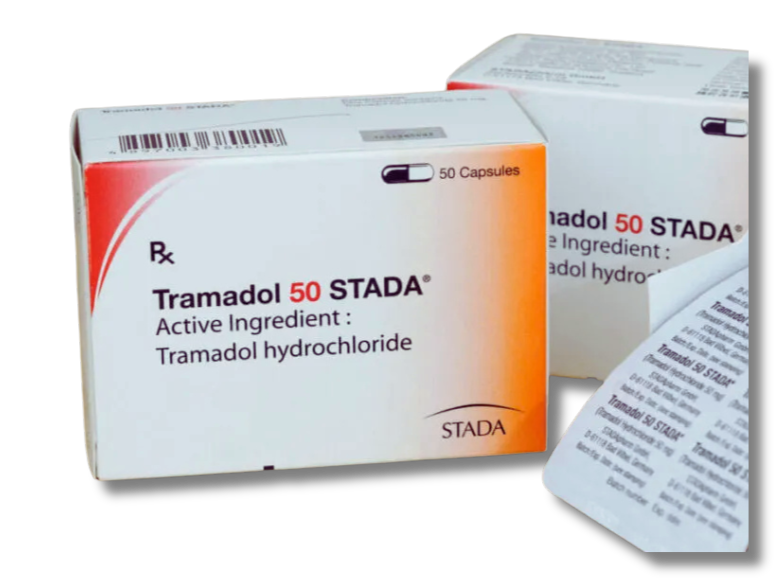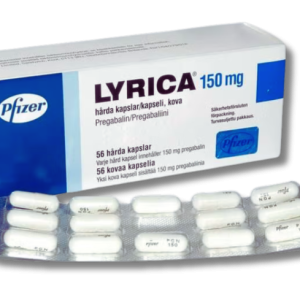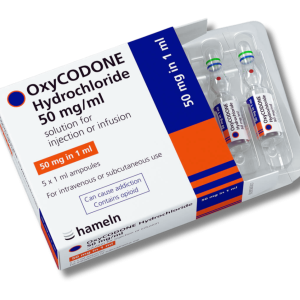Description
Tramadol is a prescription pain medication that millions rely on to manage moderate to severe pain. This opioid painkiller stands out because it combines pain relief with unique brain chemistry effects, offering comfort when other treatments just don’t do the trick.
Tramadol comes in several forms: standard tablets, slow-release capsules, drops, and injections. Doctors choose the type and dose based on each person’s pain needs.
The immediate-release forms usually kick in within 30 to 60 minutes. Extended-release versions stick around longer, making them useful for chronic pain.
Anyone considering tramadol needs to know how to use it safely. Proper dosing, timing, and awareness of side effects all matter a lot.
What Is Tramadol and How Does It Work?
Tramadol is an opioid pain medicine that doctors prescribe for moderate to severe pain in adults. It binds to special receptors in the brain and blocks certain brain chemicals from being reabsorbed.
Mechanism of Action
Tramadol works in two main ways to reduce pain. First, it attaches to μ-opioid receptors in the central nervous system, but with less strength than heavy-hitters like morphine.
Second, it acts as a serotonin-norepinephrine reuptake inhibitor (SNRI). This means it blocks the reabsorption of serotonin and norepinephrine, two important brain chemicals.
The liver turns tramadol into a more active form called O-desmethyltramadol. This new form works harder on opioid receptors than tramadol itself.
Some people have genetic differences that stop them from making enough of this active form. For them, tramadol just doesn’t relieve pain as well.
Formulations and Strengths
Tramadol comes in different forms for patients. Immediate-release tablets work pretty quickly and usually last 4 to 6 hours.
Extended-release tablets and capsules release the medicine slowly. They can take a day or two to get going, but they stick around for longer-lasting relief.
Doctors can also give tramadol as an injection into a vein or muscle. Some versions mix tramadol with paracetamol for extra pain relief.
You’ll find tramadol under brand names like Tramal, but generics are common too.
Controlled Drug Status
Most countries classify tramadol as a controlled substance because of its potential for abuse and dependence. In the US, it’s Schedule IV.
The UK calls it a Class C controlled drug, so you need a prescription. In Australia, it’s Schedule 4—prescription only.
Canada recently moved tramadol to Schedule I after linking it to 18 reported deaths between 2006 and 2017.
Because of these rules, you need a real prescription to get tramadol legally. Pharmacists have to follow special procedures when they give it out.
Medical Uses and Indications
Tramadol is a prescription medicine for moderate to severe pain when other meds just aren’t enough. It works through more than one pathway and needs thoughtful planning for how long to use it, depending on the pain.
Pain Management Applications
The FDA approves tramadol for moderate to severe pain that hasn’t responded to non-opioid medicines. It’s a class IV controlled substance because of the risk for misuse.
Primary indications include:
- Chronic pain lasting more than a week
- Acute pain that needs opioid-level relief
- Pain that doesn’t respond to standard painkillers
Immediate-release tramadol treats pain that comes and goes, usually for less than a week. Extended-release versions give 24-hour coverage for chronic pain.
Doctors usually save tramadol for when other pain meds fail. Non-opioid options are still first-line treatments in most guidelines.
Immediate-release tramadol isn’t meant for “as needed” use. It works best with regular dosing.
Use in Neuropathic Pain
Tramadol’s dual mechanism gives it an edge for nerve pain. It not only works as an opioid but also blocks serotonin and norepinephrine reuptake.
This combo makes tramadol useful for nerve-related pain. It changes pain signals in the brain’s descending pathways.
Neuropathic conditions that may benefit:
- Diabetic neuropathy
- Post-surgical nerve pain
- Chronic pain with a nerve component
Because tramadol affects neurotransmitters, it can help with more complex pain. It’s handy for pain that doesn’t respond to single-mechanism meds.
Doctors may consider tramadol when patients have mixed pain types. The blend of opioid and non-opioid actions covers more ground.
Duration of Treatment Recommendations
Treatment length depends on the pain type and which form of tramadol you’re using. Acute and chronic pain call for different plans.
For acute pain:
- Immediate-release tramadol for less than a week
- Max daily dose: 400mg for most adults
- Regular check-ins to see if it’s still needed
For chronic pain:
- Extended-release for pain lasting more than a week
- Start with 100mg once daily
- Increase dose every five days if needed
Elderly patients should take less—max 300mg a day for those over 65.
People with kidney or liver problems need special plans. Severe cases might need a different medicine altogether.
Buy Tramadol online safely in 2025
If you want to buy tramadol online, you need a valid prescription from a licensed healthcare provider. It’s a controlled substance in the UK.
Essential safety steps:
• Make sure the pharmacy is registered with the General Pharmaceutical Council (GPhC)
• Look for VIPPS accreditation
• Use secure payment methods
• Check that the pharmacy asks for a prescription
Trusted options include:
- NHS-affiliated online pharmacies
- Licensed private pharmacies with GPhC registration
- International pharmacies that follow UK import laws
It’s smart to research the pharmacy first. Read customer reviews and check for legit certifications before ordering.
Warning signs to avoid:
• No prescription needed
• Prices that seem too good to be true
• Missing contact info
• No pharmacy registration details
The pharmacy should list clear contact details, including a physical address and customer service line.
Orders made before 4pm on weekdays usually ship the same day. Delivery takes 1-3 working days depending on the service you pick.
When your medicine arrives, check it carefully. Make sure it matches your prescription and the packaging is sealed.
Tramadol comes as immediate-release and extended-release. The immediate-release form starts working in about 30 minutes and lasts 2-3 hours.
Keep tramadol stored safely at home. You don’t want kids or pets getting into it, and it helps avoid accidental overdose or theft.
How to Take Tramadol Safely
Taking tramadol the right way means following instructions for the specific form your doctor prescribed. Getting the timing and dose right really matters for pain relief and safety.
Standard and Slow-Release Tablets
Standard tablets have 50mg of tramadol each. Swallow them whole with a glass of water—don’t break, crush, or chew them, or you mess up how they work.
Slow-release tablets come in strengths from 50mg to 400mg. They release tramadol over 12 or 24 hours for longer-lasting relief.
Never break, crush, chew, or suck slow-release tablets. If you do, the dose dumps all at once, which can be dangerous and lead to overdose.
The patient information leaflet explains exactly how to take each type. It’s worth reading before your first dose—don’t skip it.
Oral Drops and Soluble Forms
Tramadol drops have 100mg per 1ml. Mix the right number of drops into a glass of water and drink it all.
Soluble tablets are 50mg each. Dissolve them in more than just a mouthful of water, then drink the whole thing.
Orodispersible tablets melt in your mouth and also contain 50mg. Make sure your hands are dry, pop one on your tongue, and let it dissolve—no chewing.
These forms usually work within 30 to 60 minutes. Doctors often use them for pain that comes and goes.
Dosing Schedules and Adjustments
Standard tablets and drops are usually taken 3 or 4 times a day. Slow-release forms are taken once or twice daily, depending on your prescription.
Try to take tramadol at the same times every day and space the doses evenly. If it’s twice daily, that’s every 12 hours.
Some groups need different schedules:
- People over 65
- Those with liver issues
- Those with kidney issues
Doctors aim for the lowest dose that gets the job done. They might tweak your dose a few times to balance pain relief and side effects.
Missed or Forgotten Doses
If you forget a dose, check the leaflet or call your pharmacist for advice. What to do can depend on which tramadol you’re taking.
Never take two doses at once to catch up. That’s risky and can cause serious side effects or overdose.
Some tricks for remembering doses:
- Set phone alarms
- Use a pill organizer
- Link doses to daily routines
Pharmacists can suggest more ways to help you remember and keep your schedule on track.
Precautions, Side Effects, and Stopping Treatment
Tramadol has real risks—breathing problems, addiction, and nasty withdrawal symptoms if you stop suddenly. Knowing these risks helps you use it safely and talk openly with your healthcare provider about any side effects.
Common and Serious Side Effects
The most common side effects show up in more than 1 in 10 people. These include:
- Nausea and vomiting
- Dizziness and drowsiness
- Constipation
- Dry mouth
Usually, these get better as your body adjusts. If you feel drowsy or dizzy, skip driving or using heavy machinery.
Serious side effects need immediate medical help. Tramadol can slow or stop breathing, especially in older adults or people with breathing problems. Watch for noisy or shallow breathing, or if breathing stops during sleep.
Seizures can happen, especially at higher doses or in people with seizure disorders. The risk goes up if you combine tramadol with certain antidepressants or other meds.
Serotonin syndrome is rare but dangerous. Symptoms include agitation, hallucinations, fever, fast heartbeat, muscle stiffness, and loss of coordination.
Severe allergic reactions can be life-threatening, though they’re rare. Signs include trouble breathing, swelling of the face or throat, and serious skin reactions.
Withdrawal and Dependence
Tramadol can cause physical dependence, even if you take it as prescribed. If you stop suddenly after regular use, withdrawal symptoms usually show up within hours.
Common withdrawal symptoms include:
- Restlessness and anxiety
- Muscle aches and pains
- Nausea and vomiting
- Difficulty sleeping
- Sweating and chills
- Drug cravings
Withdrawal intensity depends on how much tramadol you took and for how long. Symptoms often peak in about 72 hours and might stick around for weeks.
Signs of dependence might look like needing higher doses for the same effect. You might feel unwell when the medicine wears off or only feel better after another dose.
If you notice these signs, it’s important to talk with your doctor about what to do next.
The medicine carries a risk of addiction, especially for people with a history of substance abuse. Misusing tramadol can lead to overdose and even death.
Drug Interactions and Contraindications
Tramadol interacts in dangerous ways with lots of other medicines and substances. Alcohol must be avoided completely—mixing the two can seriously increase the risk of fatal breathing problems and overdose.
Medicines that increase serious risks include:
- Other opioid pain medicines
- Benzodiazepines (diazepam, lorazepam)
- Sleep medicines and muscle relaxers
- Certain antidepressants
- MAO inhibitors
Don’t take tramadol if you have severe breathing problems, a bowel obstruction, or have recently used alcohol or sedatives.
Medical conditions requiring special caution:
- Head injury or brain disorders
- Liver or kidney disease
- History of seizures
- Mental health conditions
- Sleep apnoea
Doctors don’t recommend tramadol for children under 12 or for anyone under 18 who just had tonsil or adenoid surgery. Extended-release forms aren’t for anyone under 18 either.
Pregnant women should avoid tramadol. It can cause life-threatening withdrawal in newborns.
Guidance for Stopping Tramadol
Never stop tramadol suddenly on your own. Doctors usually lower the dose gradually over several weeks to help minimize withdrawal symptoms.
A typical tapering schedule involves:
- Reducing the daily dose by 10-25% every few days
- Monitoring for withdrawal symptoms
- Adjusting the reduction rate based on how you’re doing
- Providing support to manage symptoms
The tapering process can look different for everyone, depending on the dose, type of tramadol, and your own health. Some folks might need months to stop safely.
During tapering, you might experience:
- Mild withdrawal symptoms
- Temporary increase in pain
- Sleep disturbances
- Mood changes
Doctors can prescribe medicines to help manage withdrawal. Support from family and your healthcare team really helps, too.
If you get severe withdrawal symptoms or feel like you can’t keep lowering your dose safely, call your doctor right away.
Frequently Asked Questions
Tramadol brings up a lot of questions about how to use it safely, what side effects to expect, and how it interacts with other medications. Knowing about dosages, when not to use it, and how it works with other drugs can make pain management a lot safer and more effective.
What are the common side effects associated with the use of tramadol?
Tramadol can cause side effects. Nausea, vomiting, dizziness, and drowsiness are pretty common.
Constipation often happens, too. Some people get headaches or a dry mouth during treatment.
More serious side effects can include trouble breathing, seizures, or a severe allergic reaction. If you notice any of these, get medical help immediately.
Some folks also feel confused, sweat more, or notice mood changes, especially with higher doses or long-term use.
How should tramadol be administered intravenously or intramuscularly?
Only trained healthcare professionals should give tramadol injections, and only in a hospital setting. They’ll usually give it slowly to reduce side effects.
For intravenous use, tramadol is injected slowly over 2-3 minutes. Nurses or doctors keep an eye on the injection site for any irritation or reaction.
With intramuscular injections, they use large muscles like the upper arm, thigh, or buttocks. Proper sterile technique is a must every time.
After the shot, patients need close monitoring for any bad reactions.
What is the recommended dosage for tramadol in managing moderate to severe pain?
The usual starting dose is 50mg to 100mg every 4-6 hours for pain. Don’t go over 400mg in a 24-hour period.
For immediate-release tablets, most people take 50mg up to four times daily. This keeps pain under control throughout the day.
Extended-release versions are taken once a day and last longer. Never crush, break, or chew these tablets.
Elderly patients or those with liver or kidney problems often need lower doses. Doctors adjust the dose to fit each person’s situation.
For what indications is tramadol prescribed in tablet form?
Doctors prescribe tramadol tablets for moderate to severe pain, both short-term and chronic. This might be after surgery, injury, or other medical procedures.
It’s also commonly used for chronic pain like arthritis or back pain, especially when other painkillers haven’t worked well enough.
Tramadol can help with cancer pain or other long-term painful conditions. The extended-release tablets are handy for ongoing pain control.
Doctors usually consider tramadol when patients need something stronger than regular painkillers, but maybe not a full-strength opioid.
How do the combination of tramadol and paracetamol work compared to tramadol alone?
The tramadol and paracetamol combo offers better pain relief because they work in different ways. Paracetamol acts in the brain, while tramadol works both centrally and out in the body.
With the combo, you can use lower doses of each drug and still get good pain control. That often means fewer side effects, too.
Paracetamol adds some anti-inflammatory benefits, which helps round out the pain relief. This combination is especially useful for moderate pain.
For a lot of people, this mix strikes a nice balance between strong pain control and tolerability.
In which circumstances is tramadol hydrochloride specifically contraindicated or advised with caution?
Doctors shouldn’t give tramadol to anyone with severe breathing problems. It’s also off-limits if someone’s dealing with acute alcohol intoxication.
People with head injuries or raised brain pressure need to steer clear too. The risks just outweigh any possible benefit in those situations.
If a patient takes MAOIs—certain antidepressants—they absolutely shouldn’t use tramadol. That combo can lead to really dangerous interactions and side effects no one wants to mess with.
Elderly patients need extra caution with tramadol. The same goes for people with kidney or liver disease, or anyone who has a seizure disorder.
Folks with a history of drug addiction or mental health issues should only use tramadol with careful monitoring. It’s not something to take lightly.
Pregnant or breastfeeding women? They should only take tramadol if their healthcare provider specifically recommends it. There’s a genuine risk it could affect the baby.



Reviews
There are no reviews yet.